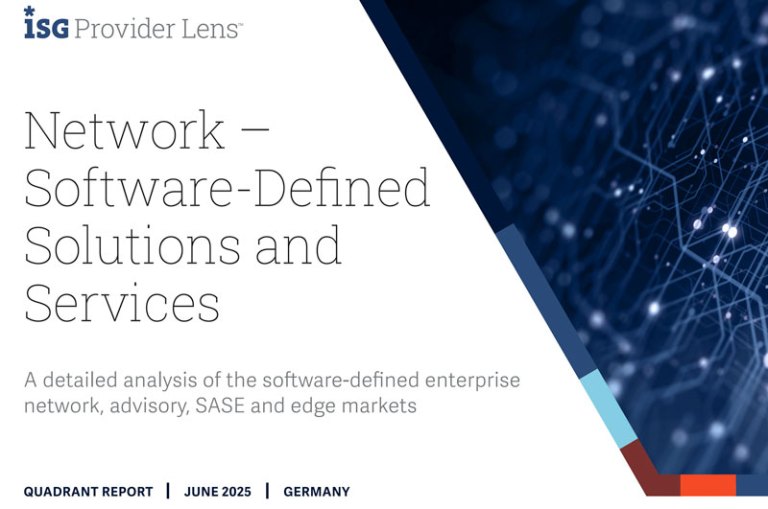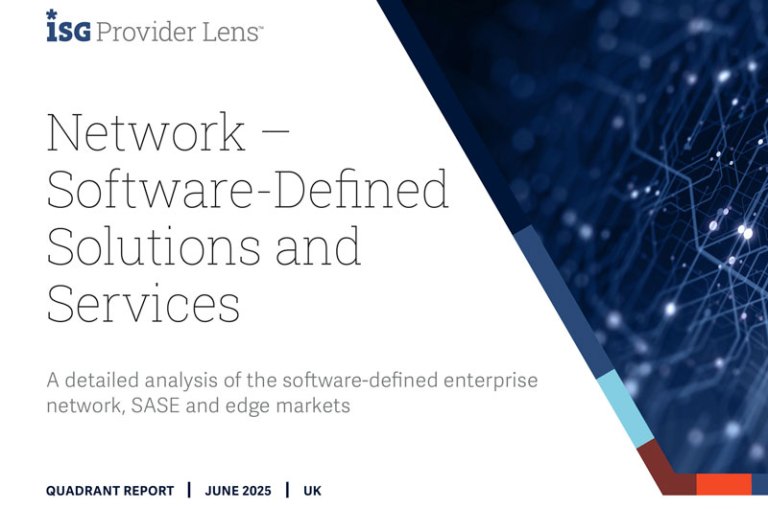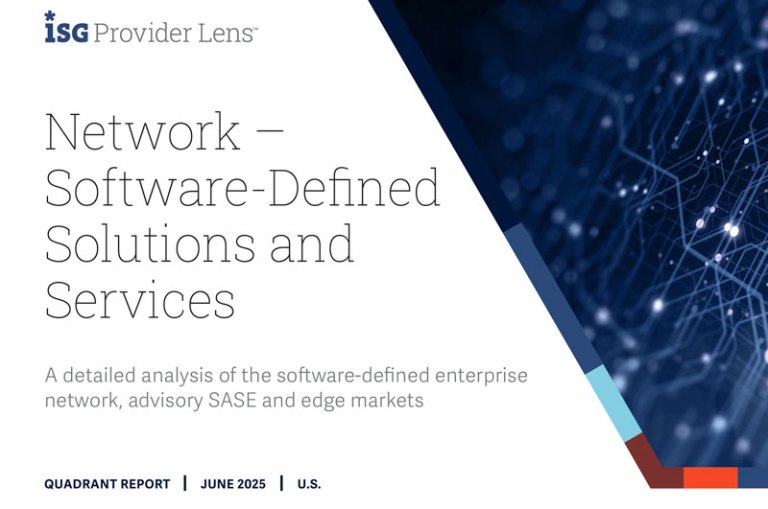Keeping pace with evolving attack methods and securing every access point takes time, talent and continuous investment. That's why more organizations are turning to trusted partners for network and security management.
By adopting Network and Security as a Service (NSaaS), businesses gain access to cutting-edge technology, specialized expertise and a simplified approach to protection, all without the burden of maintaining infrastructure in-house. This model frees up your IT team to focus on strategic goals while ensuring your network stays secure and resilient.
Curious how to make the shift without disrupting your operations? Read on for a step-by-step guide to integrating NSaaS smoothly into your environment.
What Is NSaaS and Why Should You Transition?
Transitioning to NSaaS means shifting your network security management from traditional on-premises infrastructure to a cloud-based service model. With cyberattacks growing more frequent and sophisticated, protecting your data and operations has become critical.
What Does NSaaS Offer?
NSaaS enhances network visibility and control by consolidating security and connectivity into a single, cloud-based framework. Instead of managing multiple hardware appliances, enterprises gain virtualized access to key network functions in one device.
Key Advantages:
- Simplified Network Operations: Reduce truck rolls and streamline management with virtualized Dedicated Internet Access (DIA), SD-WAN, and firewalls.
- Seamless Edge Connectivity: Easily connect offices, employees, and customers across both local and global locations.
- On-Demand Scalability: Adjust resources as business needs evolve, without complex infrastructure upgrades.
- Centralized Management: Gain a clear, real-time view of network performance and security from a single platform.
This cloud-first approach ensures enterprises can optimize performance, enhance security, and simplify network operations without traditional hardware constraints.
Key Considerations for Your Transition
To ensure a smooth migration to NSaaS:
- Assess whether the provider meets your network security requirements, compliance standards, and integration needs.
- Develop a tailored migration strategy that aligns with your organization’s goals and operational workflows.
A thoughtful approach to the transition ensures you're fully prepared to leverage the benefits of NSaaS without disruptions. To help with making this switch, let's dig into the actual transition process for more details.
Step 1: Laying the Groundwork for a Successful NSaaS Migration
With increased device usage, applications, and users, the network team has its hands full. Transitioning to NSaaS means optimizing your network and letting the team focus on improving performance. But before they can enjoy the benefits of NSaaS, a little preparation is needed. This is how you gear up for the transition:
Conduct a Network and Security Audit
Start with a comprehensive audit to identify:
- Infrastructure weaknesses, such as outdated hardware or insufficient protocols.
- Compliance gaps with regulatory standards.
- Bandwidth requirements for handling increased data traffic associated with NSaaS applications.
- Vendor requirements to eliminate supply chain complications
This evaluation highlights underperforming areas and informs your selection of an NSaaS provider that can fill these gaps with advanced technologies and stronger protections.
One of NSaaS's primary advantages is scalability. Evaluate how easily potential solutions can grow alongside your organization, such as handling an increase in users or data volumes.
Define Transition Goals and Objectives
Setting clear goals ensures a focused migration. Examples include:
- Enhancing security posture with advanced threat detection.
- Enabling scalability for future business growth.
- Reducing IT costs by eliminating hardware investments for predictable OPEX expenses.
- Facilitating secure remote work with secure access service edge frameworks.
Establishing clear objectives will guide decision-making by helping you select the right NSaaS provider and features that align with your goals. These goals will also serve as benchmarks for measuring success after transition, allowing you to evaluate how effective the NSaaS implementation is and make adjustments.
Engage Key Stakeholders and IT Teams
Involving stakeholders early is important for success. Collaborate with:
- Executives: Align the transition with organizational priorities.
- IT and Security Teams: Ensure security, technical feasibility and integration.
- Department Heads: Address unique requirements like compliance needs or operational workflows.
- 3rd Party Vendors: Understanding their requirements to ensure a smooth transition
Building early buy-in fosters collaboration and ensures the NSaaS solution meets organizational requirements.
Step 2: Identifying the Right NSaaS Provider for Your Business
An NSaaS provider can enhance security through expert management and other advanced technologies. Therefore, you should choose a reliable one that complies with regulations and offers customer support. At GTT, we provide secure networking solutions that protect the cloud environment without compromising performance. With GTT cloud networking expertise, we simplify your journey to the cloud and ensure you have data protection and streamlined workflows.
Assess Provider Capabilities and Reliability
Evaluate potential providers for:
- Uptime Guarantees: Although no provider can ensure 100% uptime, reliable providers minimize downtime with a robust infrastructure.
- Data Redundancy: Ensure multiple backups across different locations for disaster recovery.
- Threat Detection Capabilities: Look for real-time monitoring and fast response times to counter emerging threats.
Evaluate Compliance and Security Standards
When selecting an NSaaS provider, verify that the provider strictly complies with industry compliance standards. Providers must comply with industry standards like:
- HIPAA: For healthcare organizations requiring privacy and breach safeguards.
- GDPR: For handling personal data responsibly in applicable regions.
Compliance isn’t just about avoiding penalties — it builds customer trust and ensures accountability in protecting sensitive data.
Verifying compliance involves reviewing the provider's certifications, security protocols, and data handling practices to ensure they align with legal requirements for protecting sensitive information. Confirm that the NSaaS provider maintains high-security standards to protect sensitive business data against breaches and unauthorized access.
Review Customer Support and Integration Assistance
Customer support goes beyond assistance or troubleshooting. The right provider should offer expertise to help organizations maximize their NSaaS investment while minimizing operational disruptions.
Addressing Gaps with the Right Level of Support
Every business has different capabilities and resource constraints. A strong NSaaS provider should help identify and fill gaps in network security and management through flexible service models:
- Co-Management: Organizations retain control while leveraging expert configuration, monitoring, and troubleshooting assistance.
- Full Management: The provider takes on complete responsibility for monitoring, security, and performance optimization, freeing up internal IT resources.
- Professional Services: Custom consulting and hands-on implementation support to align NSaaS deployment with business objectives.
At GTT, we offer customer-first support tailored to each organization's needs. Whether businesses require hands-on management, advisory services, or self-service capabilities with expert backup, our solutions are designed to optimize performance while reducing complexity.
Step 3: Creating a Step-by-Step Plan for a Smooth NSaaS Implementation
Implementing NSaaS means deploying and integrating outsourced network security solutions into your organization's existing infrastructure, which is a big step. To effectively plan the technical aspects of a NaaS implementation without disrupting operations, follow these key steps:
Develop a Phased Transition Plan
During implementation, you can opt for a phased transition plan. This plan allows for a smooth transition by minimizing risks associated with the migration process. Break the migration into manageable phases like:
- Test components incrementally: Validate functionality at each stage.
- Resolve issues early: Minimize operational disruptions before full deployment.
- Foster user adoption: Introduce features gradually to avoid overwhelming employees.
Set Up Redundant Systems and Backups
The migration process can introduce risks that may lead to data loss, including user errors, software incompatibilities and technical failures. Therefore, adding extra devices or connections to your network is prudent. To safeguard against migration risks:
- Build redundancy: Add backup pathways to maintain business continuity.
- Establish secure backups: Ensure critical data is securely stored and recoverable.
Network redundancy involves creating multiple pathways and connections within the network infrastructure so that if one device or connection fails, others can take over, minimizing downtime. Developing contingency plans prepares you for unexpected disruptions by outlining procedures for recovery and communication during incidents.
Test NSaaS Functionality and Security
Before fully integrating an NSaaS into operations, conduct thorough testing of the setup to verify its compatibility and whether it can handle the required load and deliver consistent service without degradation. Thorough testing ensures your NSaaS solution is ready to handle operational demands.
- Load Testing: Simulate high-traffic conditions to evaluate performance.
- Vulnerability Assessments: Identify and address weaknesses to enhance security.
- Compatibility Checks: Ensure seamless integration with hardware, software, and workflows.
Step 4: Managing the Transition Process
Migrating to NSaaS may come with challenges, such as employees resisting the adoption of new technologies, which is to be expected. Follow these tips for a smooth transition that'll keep teams prepared.
Communicate Regularly with Teams
Establish a communication plan that includes regular updates about the transition process. Use various channels such as meetings, emails, or internal newsletters to keep all teams informed about:
- Migration timelines
- Progress milestones
- Changes to workflows or expectations
Transparency helps alleviate concerns and builds trust among employees.
Monitor System Performance Closely
Track user engagement with the new system through login rates and feature usage metrics. Solicit user feedback about their experiences, which can provide valuable insights into areas needing improvement or additional support.
Perform continuous testing throughout the transition process. This includes real-time monitoring to identify and address issues quickly. You can also simulate user interactions and perform user monitoring to capture actual user experiences to help identify performance issues or disruptions.
Provide Training for Employees
Offer comprehensive training tailored to different user roles to ensure all team members are comfortable using the new NSaaS solution. Training equips teams with the knowledge and skills necessary to use the platform effectively, enabling them to leverage its features to their fullest potential. This understanding enhances productivity and empowers employees to troubleshoot issues independently, reducing reliance on IT support.
More importantly, training sessions facilitate a smoother transition by addressing concerns or uncertainties about the new system. By offering structured learning opportunities, your organization can help employees adapt quickly, leading to higher adoption rates and better utilization of the NSaaS.
To enhance understanding and proficiency:
- Customize training by role to focus on relevant tasks and responsibilities.
- Leverage vendor resources, including webinars, tutorials, and customized sessions, for expert guidance.
- Provide ongoing support to address evolving needs and ensure long-term success.
Step 5: Optimizing NSaaS Performance Post-Implementation
Completing a successful transition to NSaaS is a significant milestone, but it's only the beginning of the journey. Implement robust post-transition strategies to maximize the benefits of this modern security solution. These steps boost the system's effectiveness and security and adapt functionalities to meet your organization's dynamic needs. By continuously optimizing your NSaaS setup, you ensure the NSaaS remains effective, secure, and aligned with evolving business needs.
Gather Feedback from Teams
Gather feedback from users regarding their experiences with the NSaaS platform. This feedback helps identify areas where employees may struggle or face challenges, allowing you to refine training programs and improve the overall user experience. By addressing these challenges, you can ensure employees are equipped to use the system effectively and independently.
Feedback also provides valuable insights into how the platform performs in real-world scenarios, highlighting both its strengths and weaknesses. Use this information to guide ongoing improvements and optimizations.
To make the most of user feedback:
- Conduct regular surveys to capture employee opinions on usability and functionality.
- Hold focus groups to discuss specific pain points and solutions.
- Monitor user behavior to identify trends and areas needing improvement.
Review System Performance and Security Metrics
Regularly reviewing network performance and security metrics ensures that the NSaaS model continues to meet your organization's business needs. Ongoing monitoring provides critical insights into how well the solution functions, helping you quickly identify performance or security issues before they impact operations.
In addition to addressing problems, monitoring can reveal optimization opportunities that may not have been apparent during initial implementation. For example, tracking network usage trends might lead to better resource allocation decisions. Regular assessments also allow organizations to validate service level agreements (SLAs) with their NSaaS providers, ensuring accountability and alignment with business objectives.
To stay on top of system performance and security:
- Monitor key performance indicators (KPIs): Focus on metrics like uptime, latency, and bandwidth usage.
- Conduct regular security audits: Identify and address vulnerabilities proactively.
- Validate SLAs periodically: Confirm that your provider is meeting agreed-upon standards.
- Leverage automated monitoring tools: Gain real-time visibility into system health and usage trends.
Optimize Configuration as Needed
A key advantage of adopting a cloud-based NSaaS model is its flexibility, allowing for easy reconfiguration as your business grows or evolves. NSaaS solutions can be adjusted to accommodate increased demand, implement new security protocols, or add features without requiring infrastructure changes.
Scalability empowers organizations to optimize costs and maintain high performance. Many NSaaS providers offer features like:
- Auto-scaling: Dynamically adjusts resources to meet usage spikes.
- Load balancing: Distributes network traffic evenly to maintain stability.
This flexibility enables businesses to seamlessly integrate new services or functionalities as needs change, ensuring their network security remains robust and aligned with operational goals.
To maximize configuration benefits:
- Monitor for underutilized features that could be streamlined for greater efficiency.
- Review configurations regularly to identify redundant processes.
- Leverage scalability tools to adjust resources in response to fluctuating demands.
By regularly reviewing and optimizing configurations, businesses can maintain peak efficiency and ensure their NSaaS setup evolves with their goals.
Achieve a Smooth Transition with GTT
Transitioning from a traditional network system to a cloud-based solution enhances operations and strengthens cybersecurity posture while reducing infrastructure costs. By carefully assessing providers and aligning your migration with business objectives, you can unlock the full potential of NSaaS.
At GTT, we specialize in delivering network security solutions that empower your business to thrive in today’s dynamic digital landscape. Our Managed SD-WAN solution ensures secure, reliable connectivity across multiple locations, enabling seamless operations. Our DDoS Protection and Mitigation service also protects critical infrastructure against evolving cyber threats.
Let GTT guide you through a seamless, disruption-free transition as your organization shifts to a cloud-based network model. With our multi-layered security solutions and consultative approach, we simplify network management while helping you achieve your business goals.
Talk to our experts today to learn how GTT can help you secure, scale, and optimize your network.











